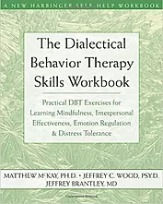I Need Help With Borderline Personality Disorder
- Eric Morris
- Mar 7, 2020
- 3 min read
Updated: Mar 29

Borderline personality disorder (BPD) is a complicated constellation of patterns that typically leads to problems in relationships, self-image, emotion management, and impulsive control.
One of the primary features of BPD is an intense fear of abandonment or more generally of feeling lonely. Emotions tend to fluctuate and can be felt really intensely. The person often has a distorted self-image and will not have a clear sense of his or her own identity (e.g. "I don't know who I am or what I like"). There is a life-long pattern of unstable relationships, especially romantic ones. These people may seem dramatic or unpredictable in their behaviour. Feelings of paranoia may also be present and there is typically a history of impulsive or self-destructive behaviours, including self-harm, unsafe sex, and eating disorders. Suicidal thoughts are often prevalent and long-standing.
BPD can be a challenging mental health issue and you should strongly consider getting support from a therapist with training in this area. Specifically, you will want to look for a therapist familiar with a type of therapy called Dialectical Behaviour Therapy (DBT) - this was designed specifically for those with BPD and has been shown to be effective. On a positive note, many people who would have met criteria for BPD in their teens no longer meet criteria as adults, so there is hope.
Here are some strategies if you experience BPD symptoms:
1) It is important to sit with your emotions: Mindfulness, covered in another post, is an important strategy for learning to manage your intense emotions. Try to start paying attention to how you are feeling and see if you can label your emotions. Every hour, spend a moment to pause, think about how you are feeling. Don't work at changing your emotional reactions, just notice them and practice accepting them (e.g., I'm feeling kind of sad right now and that is OK, it is normal to feel sad sometimes). When we don't judge our emotions, they are more likely to be felt in a healthy way and they may feel less intense. Deep breathing is also important when your emotions get too strong, again, the goal is not to get rid of the emotion, but to sit with it, and tolerate it.
2) Communicate your needs and strengthen your boundaries: One of the reasons those with BPD have so many interpersonal issues is that their intense emotions, impulsiveness, and insecurities lead them to lash out at those most important to them. If you are in a relationship, you should consider having a discussion with your partner about your BPD. There are books for families or spouses of those with BPD to help them understand this type of personality and it gives them ways they can communicate in healthy ways (see below for a book suggestion).
One of the first things you can start implementing with your partner is trying to label your emotions and communicate them clearly. For example, if you find yourself getting emotional, tell your partner you need to pause and maybe go for a walk. This will give you a chance to sit with your emotions and ideally get a sense for how you are feeling. You can then come back and tell your partner, "I feel rejected when you...". Be careful not to say, "YOU make me feel..." Own your emotional reaction.
Those with BPD also struggle with healthy boundaries. You should take time to consider those in your life and how they tend to make you feel. If you typically feel insecure around a person, ask yourself whether they are treating you properly or whether they seem to show a genuine interest in who you are or in your opinions.
3) Managing your distress: For those who experience their emotions so intensely, learning how to tolerate them is paramount. There are a variety of strategies for managing your strong emotions, here are a few: Count backwards from 100 by 3's (e.g., 97, 94, 91...). Think of a word for every letter of the alphabet (e.g. Apple, box, cat...). Look around the room you are in currently and find an object with a pattern; notice the colour of the object, the shape, the texture - study the details. If there is a bookshelf in the room, read the titles of the books slowly, either out loud or in your head. Close your eyes and remember a pleasant experience in as much detail as possible. Repeat several soothing self-statements, "I'm OK", "I am safe", "This will pass" etc. Go for a walk, breathing slowly as you do so. Distract yourself with a game on your phone or a cute video.
There are several good books on managing BPD. Here are my recommended books.






